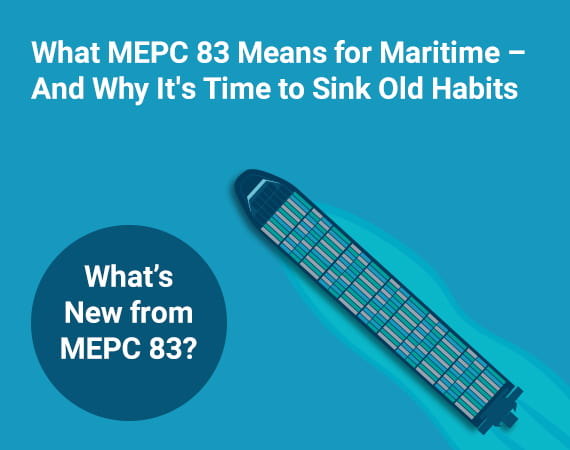
Shipping never stands still, and neither do the rules. At the latest MEPC 83 meeting in April 2025, the IMO rolled out some big decisions that will shape how we do business on the water. If you’re in maritime marketing or work with shipping brands, these changes are about to become your new talking points.
The Push for Net-Zero Shipping
The headline? The new “Net-Zero Framework.” The industry is now officially on the clock to cut greenhouse gas emissions from ships all the way to zero. Not “less.” Not “almost.” Zero. That’s a tall order, but it’s also a clear direction.
This plan has two main levers. First, ships will need to run on much cleaner fuels- no more skating by on the old stuff. Second, there’s a price tag coming for pollution. If your ships are putting more into the air, you’ll be paying for it. The message from regulators is pretty clear: clean up, or pay up.
More Than Just Carbon
Of course, carbon isn’t the only thing on the radar. The IMO is zooming out and looking at the bigger environmental picture.
Plastic pollution is getting a long-overdue spotlight. Ships are part of that story, so there’s a fresh action plan to keep more plastic out of the sea. Then there’s biofouling, that stubborn hull gunk. It’s more than just a maintenance headache; it spreads invasive species. The IMO wants new rules to tackle it.
And for those who like to keep track of acronyms, the North-East Atlantic is now an Emission Control Area. Ships in that zone face stricter air pollution rules. If you’re routing vessels through there, it’s time to double-check your compliance playbook.
What’s New from MEPC 83?
There’s a lot packed into this round of updates. Here are a few highlights worth knowing:
- The new net-zero rules will apply to ships over 5,000 gross tonnes, with some exceptions for ships in national waters and certain offshore vessels.
- The greenhouse gas rules use a two-tier system. Ships will be measured against annual fuel intensity targets, and those that miss the mark will need to buy “remedial units”-think of them as compliance credits, with real costs attached.
- The first year for mandatory emissions reporting is set for 2028, giving the industry a little breathing room to get systems in place.
- There are new amendments to the NOx Technical Code, especially for ships with modified engines or multiple operational profiles.
- The committee adopted new guidelines for in-water cleaning of biofouling, so expect more focus on hull maintenance and reporting.
- There’s a push for more transparent fuel oil data reporting, which means more paperwork-but also more clarity for everyone involved.
- The Hong Kong Convention on Ship Recycling is moving into an “experience-building phase,” so shipowners should keep an eye out for best practices and future requirements.
Making Complex Rules Easy to Understand
Some of these rules can be pretty heavy-going. But at the end of the day, it’s simple: ships need to be cleaner, and the industry has to show it’s making real progress. People aren’t impressed by buzzwords or empty promises-they want to see what’s actually changing out there.
If your company is taking steps-whether that’s switching to cleaner fuel, trying out new tech, or cutting down on waste-don’t be shy about sharing it. Let people know what you’re up to. Being open builds trust and shows you’re serious about making a difference. Sharing the real steps you’re taking builds trust. It shows you’re not just ticking boxes, you’re genuinely working for a cleaner industry. And honestly, that’s the kind of story people want to hear.
What Should You Do Next?
Here’s a quick checklist. Make a plan for the net-zero rules. Communicate what you’re doing for the ocean and the air. Keep your audience in the loop. Show you’re not just reacting-you’re leading.
The next big IMO meeting is set for October 2025. That’s when the new framework gets the green light, and then the countdown really begins. Sixteen months might sound like a while, but in shipping, it’s a blink.
What to Watch For
- The official adoption of these rules is set for October 2025, with most coming into force by March 2027.
- Compliance costs are real, but the system is designed to be less expensive than the EU’s FuelEU Maritime rules-at least for now.
- The new biofouling framework will likely mean more regular hull inspections and cleaning, so now’s a good time to review your maintenance plans.
- Data transparency is becoming the norm, not the exception. If you haven’t already, start thinking about how you’ll collect and share fuel and emissions data.
How Wake Media Can Help
No one expects you to have all the answers overnight. These changes are a lot to take in, even for the pros. At Wake Media, we help shipping brands turn complex regulations into clear, compelling stories. We’ll help you show the world not just that you’re compliant, but that you’re ahead of the game.
Want to chat about what’s next? Or just need a sounding board for your comms strategy? We’re here ready to help you navigate whatever comes over the horizon.
